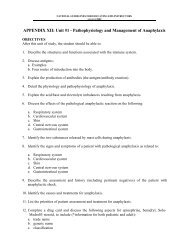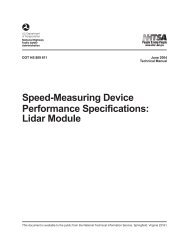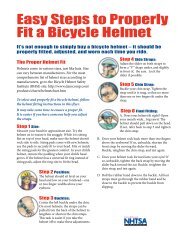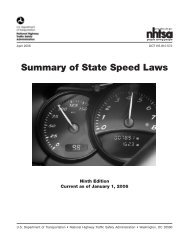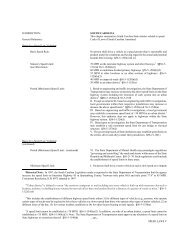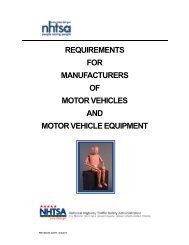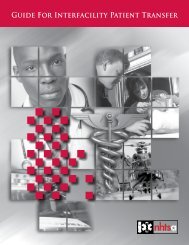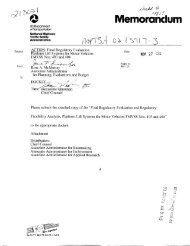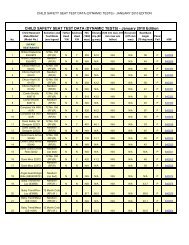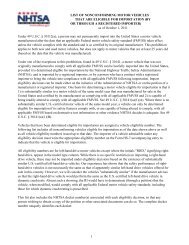Standard Practice for Emergency Medical Dispatch ... - NHTSA
Standard Practice for Emergency Medical Dispatch ... - NHTSA
Standard Practice for Emergency Medical Dispatch ... - NHTSA
Create successful ePaper yourself
Turn your PDF publications into a flip-book with our unique Google optimized e-Paper software.
MEDICAL DISPATCHER CERTIFICATION<br />
Given the very important role of the dispatcher in the chain of survival, certification<br />
should become governmentally mandated throughout the United States.<br />
Certification should include requirements <strong>for</strong> continuing education and recertification.<br />
Continuing education programs should incorporate <strong>for</strong>mal written and practical tests.<br />
Continuing education and recertification allow EMS agencies to <strong>for</strong>mally promote and<br />
ensure the ongoing quality of EMD per<strong>for</strong>mance. Certification also establishes<br />
processes <strong>for</strong> decertifying individuals who cannot meet minimum standards. There<br />
have been no studies to determine the optimal frequency or process of<br />
recertification; there<strong>for</strong>e, expert panels have recommended that EMD's should be<br />
recertified every 2 to 4 years. At least 12 hours per year of continuing education<br />
should be required <strong>for</strong> EMD recertification.<br />
It is recommended that EMD certification:<br />
• Be required of all EMD's through either State government processes or<br />
professional medical dispatch standard-setting organizations<br />
• Require continuing education and recertification as components of a<br />
continuing certification process.<br />
MEDICAL DISPATCH QUALITY CONTROL AND IMPROVEMENT<br />
Each EMS system should have in place a comprehensive quality improvement<br />
program. Four goals in the quality control and improvement of medical dispatch<br />
activities are that:<br />
1. <strong>Dispatch</strong>ers understand medical dispatch policy, protocol, and practice<br />
2. <strong>Dispatch</strong>ers comply with medical dispatch policy, protocol, and practice<br />
3. Deficiencies in understanding and compliance with medical dispatch policy,<br />
protocol, and practice among dispatchers be corrected<br />
4. <strong>Medical</strong> dispatch policy, protocols, and practice be updated on a continuous basis<br />
to ensure that they are appropriate and effective.<br />
A comprehensive quality control and improvement system <strong>for</strong> emergency medical<br />
dispatching has several components. Among these are selection of personnel;<br />
orientation; initial training; certification and recertification; continuing dispatch<br />
education; physician medical direction; data generation; case review and<br />
per<strong>for</strong>mance evaluation; correction of per<strong>for</strong>mance problems (risk management);<br />
and decertification, suspension, or termination. These components of medical<br />
dispatcher quality improvement are essential <strong>for</strong> maintaining the type of employment<br />
environment necessary to ensure safe and effective patient evaluation and care.<br />
One of the most important areas of quality control/improvement is that of case<br />
review and per<strong>for</strong>mance evaluation. Between 7 and 10 percent of each EMD's cases<br />
should be randomly reviewed. The review of random cases ensures that each<br />
dispatcher's current practice (especially compliance with protocol) is determined. In<br />
addition, the review of out-of-the-ordinary cases (both excellent and problematic) is<br />
important. These cases are often identified by sources external to the dispatch<br />
center. The involvement of EMS field personnel in reporting incidents that appear to<br />
84




